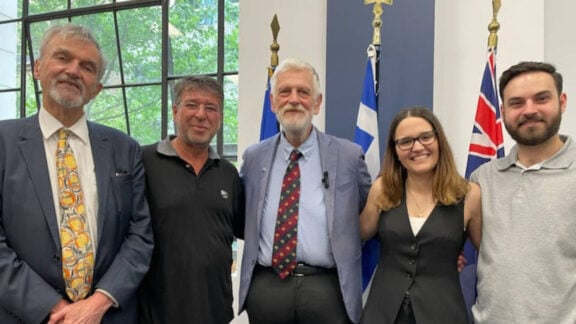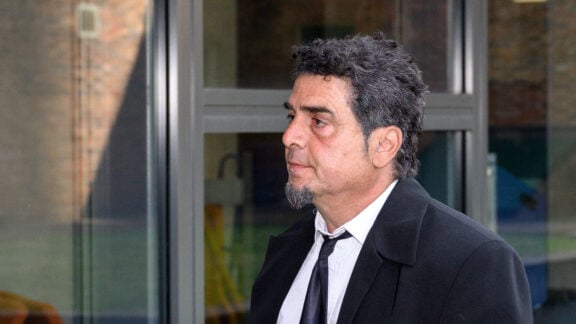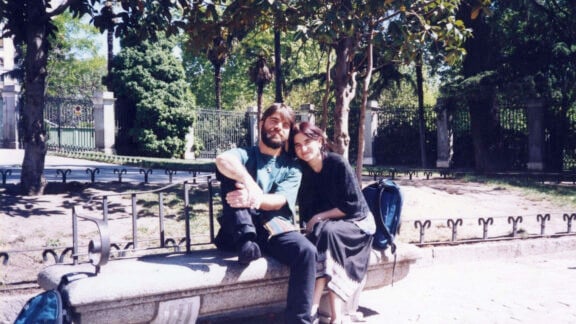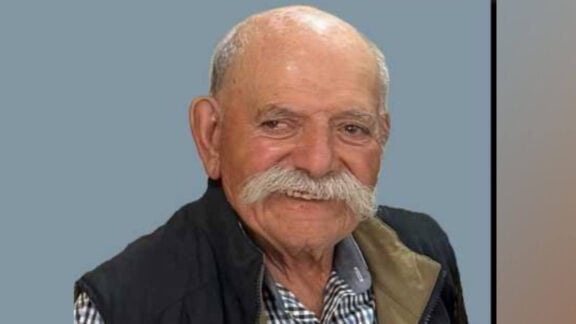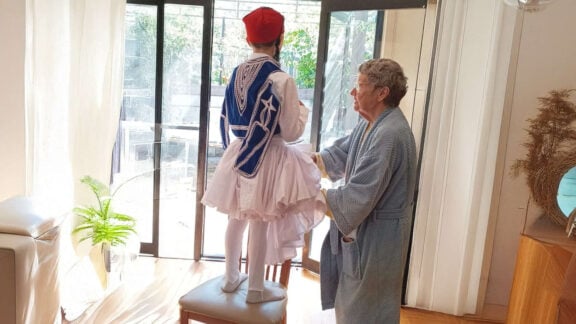The recent republication of the first-hand account of the Lemnos experience by Anne Donnell – Frontline Nurse: The Inspiring True Story of an Australian Nurse at Gallipoli is an important document highlighting the dire situation many ANZAC wounded confronted in Lemnos during the Gallipoli Campaign of WWI.
Published by the owners of Anne’s correspondence and diaries – Graeme Mitchell and Jan Leader. The publication includes an authoritative afterword by Dr Robert Pascoe, Dean Laureate and Professor of History at Victoria University.
South Australian nurse Anne Donnell was one of the most important chroniclers of their experiences as a nurse in the First World War. She would serve in Egypt, on the Western Front, in England and on Lemnos during the Gallipoli campaign. I came across Anne Donnell and her correspondence as part of my research for my own book – Lemnos & Gallipoli Revealed. Firstly I was fortunate to have been lent a copy of the original 1920 Angus & Robertson publication of her letters home under the title, Letters of an Australian Army Sister. The publication is based on the collection Anne sold to the State Library of NSW in 1919. The Library’s collection takes the form of two notebooks in which the content of the original letters (referred to as circular letters) have been transcribed by Anne Donnell. The State Library states on its website that these are “based on and partly copied from her diary”. As Dr Pascoe writes after the war Anne had gathered up the letters she had sent home during the war and transcribed them creating a single narrative. However this transcription and the subsequent 1920 publication were both apparently subject to military censorship.

Dr Pascoe explains that this new publication is a transcription of the original four volumes of diaries; themselves written by Anne from her original letters. These diaries had been handed down on her death in 1956 to Yvonne Mitchell who had been raised by Anne in Kalgoorlie after the war. It is only through the devotion of Yvonne’s family – especially Graeme Mitchell and his partner Jan Leader – that these diaries have been saved from oblivion and now offered for all to read.
The published transcription is largely identical to that held by the State Library of New South Wales, with the exception that the latter has a further diary covering the period 29 December 1917 to January 1919, while the former includes diary entries for 8 June 1918 through to 19 February 1919 not included in the latter collection.
Taking all this into account, this publication is a welcome one. The correspondence of Anne Donnell provide an important record of the experience of these young Australian nurses sent to war.
She would see service in Egypt, Lemnos, England and on the Western Front, ending the war with the rank of Nurse and leaving the service in May 1919 after her return to Australia. Her account covers the expanse of her war service. But for those interested in the Hellenic link to Anzac, Anne’s recording of her experience on Lemnos are most relevant.
Anne Donnell was a 39 year old experienced nurse when she enlisted as a Staff Nurse in the Australian Army Nursing Service in 1915. Born in Cherry Gardens, South Australia, she embarked from Australia boarding the SS Mooltan at Adelaide, joining the other Australian nurses and medical staff of her unit, the 3rd Australian General Hospital. The Mooltan had begun its journey in Sydney, stopping at Melbourne before proceeding to Adelaide and Perth and finally leaving Australia. It was the beginning of a journey that would eventually take Anne and the other Australian nurses to the northern Aegean Island of Lemnos and the Gallipoli campaign.
Lemnos was the advanced base for the Gallipoli campaign, providing a major naval harbour, supply base, rest camps and a growing medical establishment to service the increasing needs of the troops at the fronts on the Gallipoli Peninsula. It was as a result of the planning for the coming August Offensives on the Peninsula that Anne’s unit would be diverted to Lemnos, joining a number of other medical facilities brought there to expand its medical capacity.

Anne’s account provides a detailed commentary on the experience of the nurses, medical staff and patients on Lemnos. She wrote of Lemnos’ great harbour, full of Allied vessels. When she arrived in October she writes of seeing “a few Hundred” in the harbour. Her account confirms the poor situation at the hospitals – the lack of water, exposure to wind, rain and the cold, storms bringing down their tents and turning the hospitals sites into quagmires of mud and water. She wrote of the prevalence of illness amongst patients, such as dysentery and frostbite, illnesses that could have been avoided. Like many of the staff who has left personal accounts, Anne despaired at the condition of the sick soldiers, it was all “too sad for words, hopelessly sad”. She also writes of illness striking the nurses on Lemnos.
The publication is aided immensely by Dr Pascoe’s informative appendix places Anne’s entries in the context of the experience of the nurses on Lemnos, compares the various texts, adds an important review of the public reception in Australia of the original publication of the diaries and Anne Donnell’s post-war life in Australia. Dr Pascoe also explains some of the deletions apparently made due to military censorship, particularly as it concerned personal relations between the nurses and male soldiers.
The publication also includes many photographs that are cited as coming from Anne Donnell’s personal collection. Those photographs depicting Lemnos are identical to those taken by her colleague, Lance Corporal Albert Savage, who worked in the radiography section of the 3rd Australian General Hospital on Lemnos (for example see the arriving nurse photo reproduced here). Albert’s photographs are held in the State Library of New South Wales. Many of the images in Albert’s collection are also in other veterans collections (see those held in the University of Queensland’s Fryer Library collection). Whether he developed others photographs or shared his images with others, we may never know. However we do know from Anne’s account that she did take photographs herself while on Lemnos.
I would also add that the title chosen for the book – Frontline Nurse – is appropriate. For some the service of those on Lemnos was not considered a frontline posting. This is one of the reasons no doubt that the Australian and New Zealand Government’s in the 1960’s excluded those who served on Lemnos from their Gallipoli Medallion awards. Yet my own research confirms that those on Lemnos were in fact subject to enemy fire, with enemy aircraft making regular bombing attacks on the Allied personnel based there. Anne herself witnessed such bombings, writing of it in her diary. Some Allied personnel were killed, but no Australians. Those sailing to and from Lemnos were also subject to attack by enemy submarines and other vessels. Lemnos was indeed on the frontline, as was Anne and her fellow nurses. It is for this reason that I have requested that the Australian Government revise its exclusion of Lemnos from the Gallipoli Medallion. Hopefully this will be accepted sometime in the future as the service on those on Lemnos is better understood.
The importance of Anne Donnell’s letters should not be under-estimated. Together with that of Matron Grace Wilson, Nurse Lucy Daw, Nurse Evelyn Davies and other veterans who recorded their time on Lemnos, Anne Donnell’s account should be essential reading for anyone interested in the Australian experience of Lemnos during the Gallipoli campaign. Dr Pascoe’s appendix adds immeasurably to any appreciation of the significance of Anne’s account. The publication of this book will no doubt bring the record of her experiences – and that of the other Australians nurses who served with her – to a wider audience.

Copies of Frontline Nurse can be purchased via www.annedonnell.com.au – priced at $57, including postage.
Jim Claven is a trained historian, freelance writer and published author, his most recent works including Lemnos & Gallipoli Revealed: A Pictorial History of the Anzacs in the Aegean (2019) and Grecian Adventure: Greece 1941, Anzac Trail Stories & Photographs (2022). He can be contacted via email – jimclaven@yahoo.com.au

